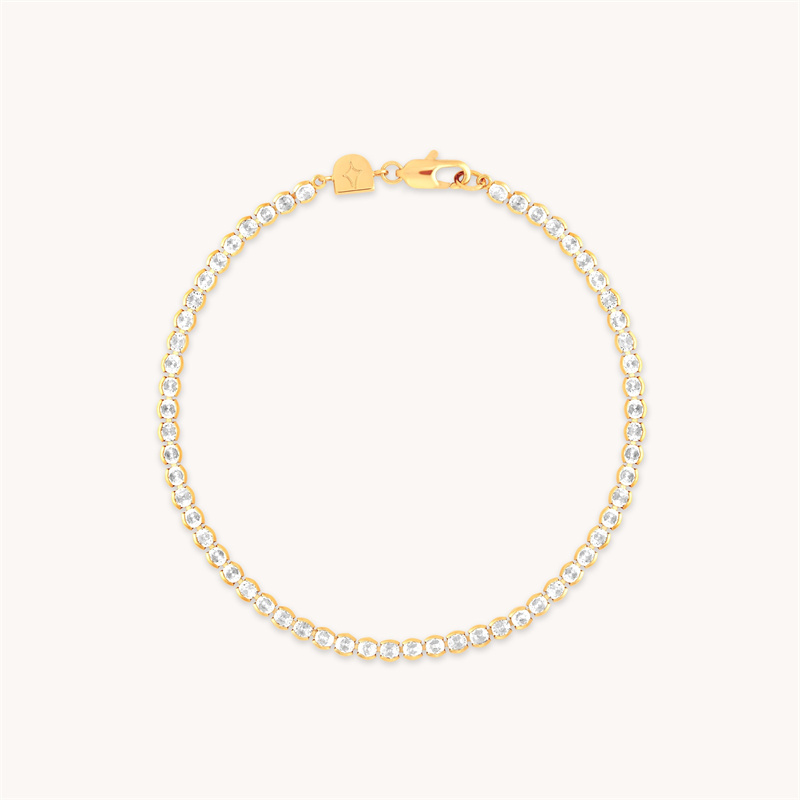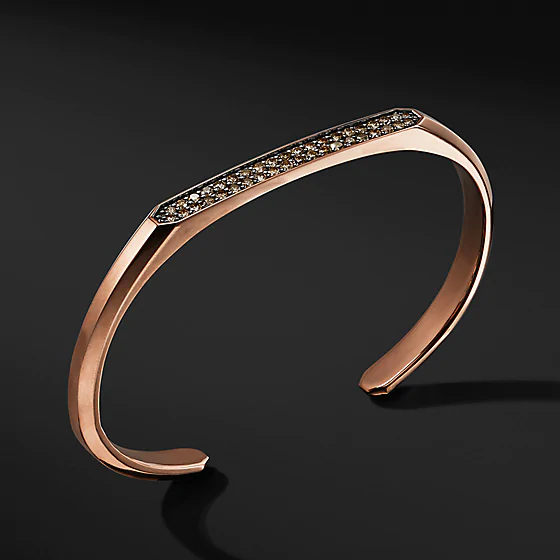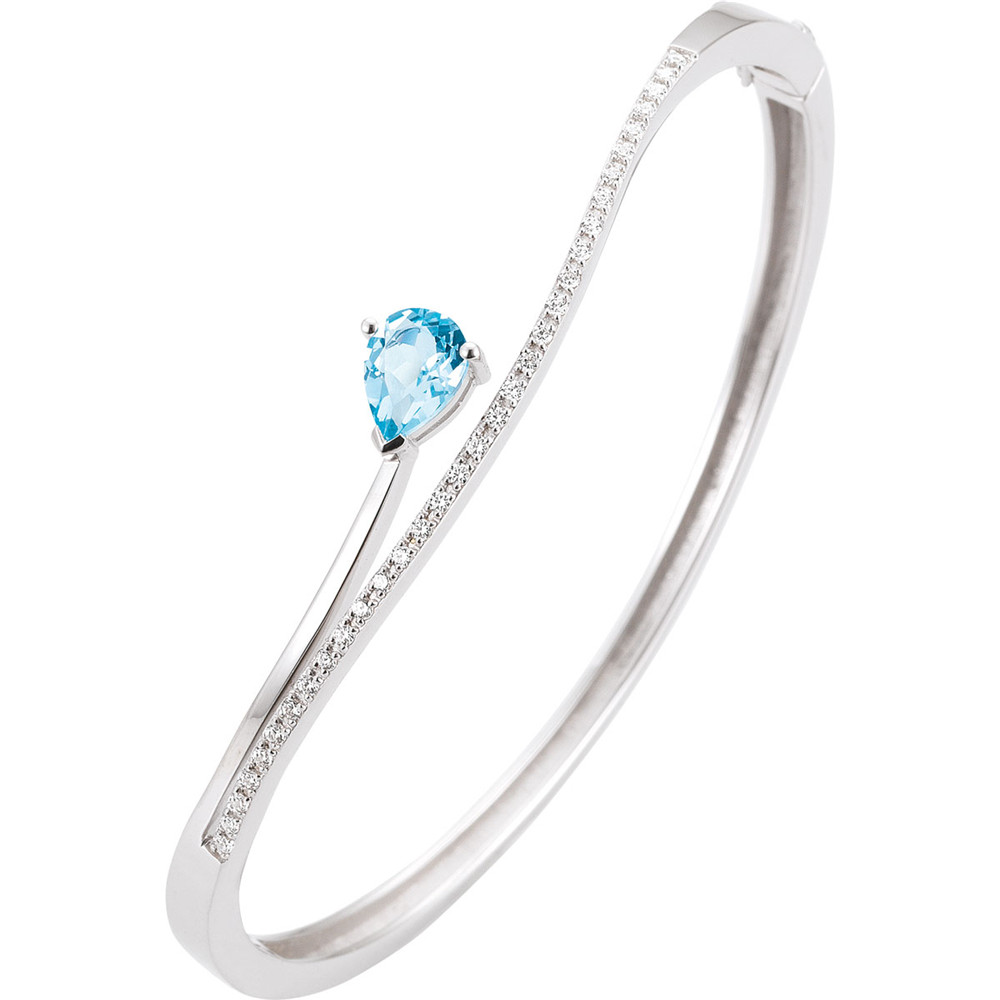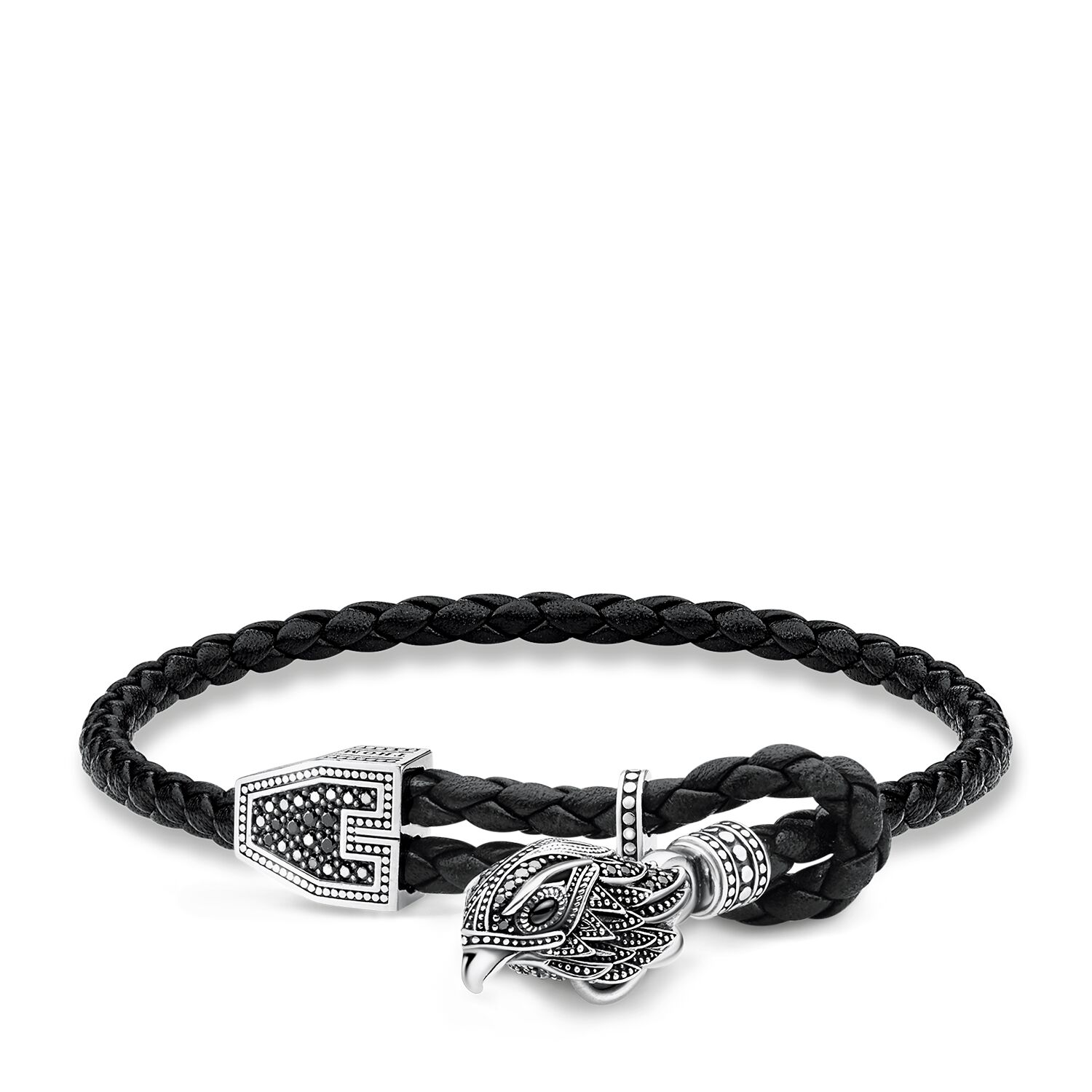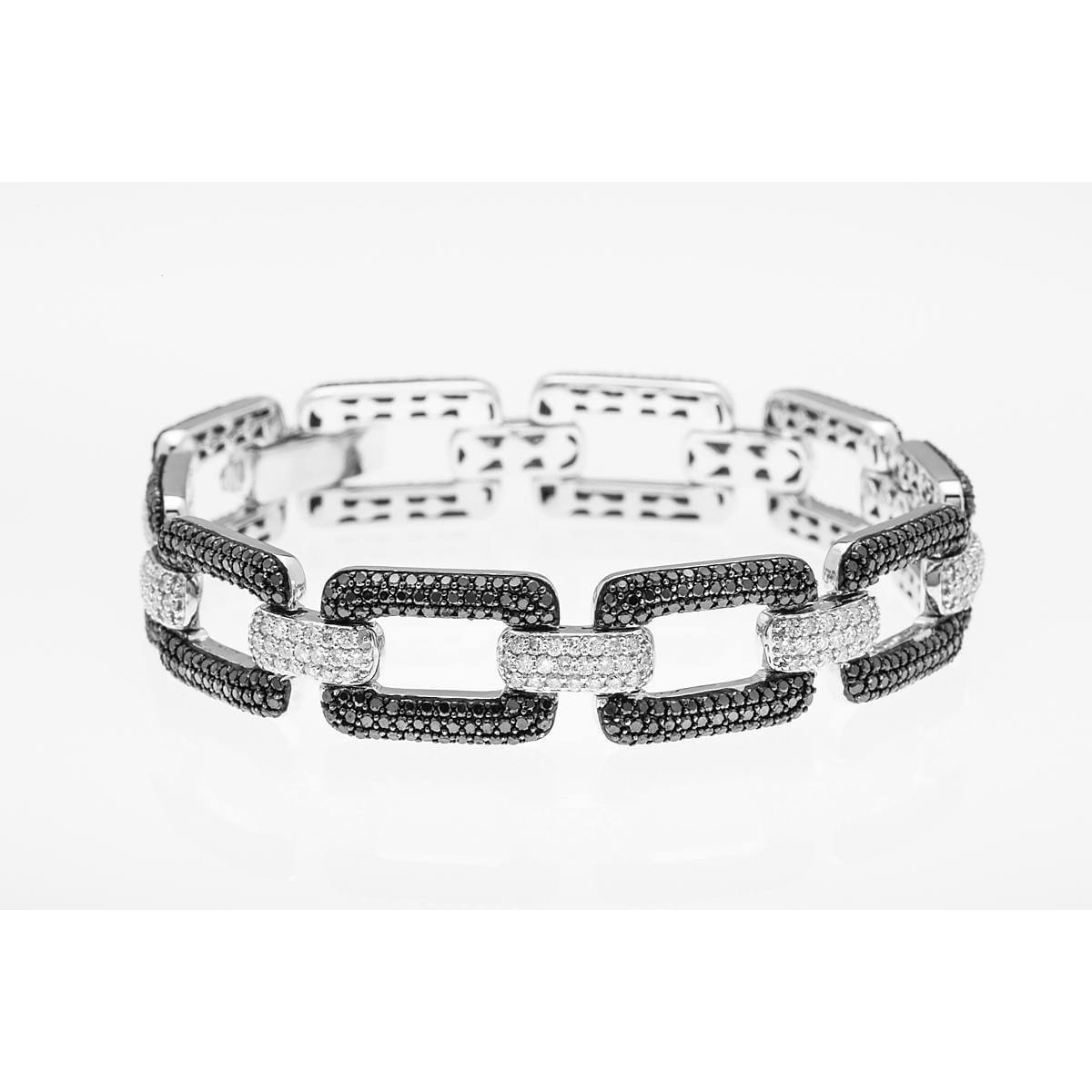A Strategic Analysis of OEM Pricing for Tennis Bracelets in Vermeil Gold at JINGYING
A Strategic Analysis of OEM Pricing for Tennis Bracelets in Vermeil Gold at JINGYING
LET’S GET STARTED : mo@kingjy.com
Decoding Value: A Strategic Analysis of OEM Pricing for Tennis Bracelets in Vermeil Gold at JINGYING
Abstract
In the competitive landscape of jewelry manufacturing, the Tennis bracelet—a timeless symbol of elegance and continuous beauty—represents a significant product category, especially when executed in high-quality gold vermeil. For an OEM (Original Equipment Manufacturing) client seeking partnership with a premium manufacturer like JINGYING, understanding the intricacies of pricing is paramount. This comprehensive analysis delves beyond a simple per-piece quote to explore the multifaceted cost structure behind manufacturing a Tennis bracelet in vermeil gold. It will dissect the core cost drivers, from raw material selection and labor intensity to economies of scale, advanced plating technology, and the intrinsic value of the JINGYING standard of quality. This article provides a framework for clients to understand pricing models, negotiate effectively, and ultimately recognize the value proposition offered by a manufacturer dedicated to excellence, ensuring a partnership that is both economically viable and qualitatively superior.
Introduction: The JINGYING Value Proposition in OEM
An OEM relationship is a partnership where a client (often a brand or retailer) contracts a manufacturer (JINGYING) to produce products that will be sold under the client’s brand name. The price is not merely a reflection of material and labor costs; it is a manifestation of a manufacturer’s expertise, quality control systems, technological investment, and ethical standards.
For a complex item like a Tennis bracelet—a flexible bracelet typically featuring a single row of uniformly cut gemstones set in a precious metal—the manufacturing process is intricate. When this metal is vermeil (a thick layer of gold over sterling silver), the variables multiply. A client approaching JINGYING for an OEM quote must understand that they are not just buying a product; they are investing in a guarantee of quality, consistency, and brand protection.
Pillar 1: Deconstructing the Core Cost Drivers of a Vermeil Tennis Bracelet
The final OEM price per unit is an aggregate of numerous cost factors. Ignoring any one of them leads to an inaccurate understanding of value.
1.1. Raw Material Costs (The Foundation)
This is the most visible cost component but must be broken down further:
- Sterling Silver: The base metal for vermeil.
- Cost Calculation: Based on the weight of the silver used in the bracelet’s construction. This includes the weight of the setting links and the clasp. Price fluctuates daily with the London Bullion Market Association (LBMA) silver spot price.
- JINGYING Premium: JINGYING likely uses a premium, tarnish-resistant sterling silver alloy (e.g., Argentium Silver or copper-free sterling), which carries a higher cost than standard 925 silver but offers superior durability and a better base for plating.
- Gemstones: The primary cost driver for a Tennis bracelet.
- Type: The choice of stone dramatically affects price. Cubic zirconia (CZ) is the most cost-effective. Lab-grown diamonds (of various quality grades), white sapphires, morganite, or amethyst offer a mid-range. Natural diamonds represent the premium end.
- Size and Carat Weight: The size of the stones (e.g., 2.5mm, 3mm, 4mm) determines the number needed and the total carat weight per bracelet. A 4mm bracelet will have significantly fewer stones than a 3mm one of the same length, but each stone is more expensive.
- Quality: For diamonds (lab-grown or natural), the 4Cs (Cut, Color, Clarity, Carat) are critical. Well-cut, white, eye-clean stones command a higher price. For CZ, the grade (e.g., 5A) affects price and brilliance.
- Setting: The cost of the stones includes the sorting and matching required to ensure uniform color and appearance across the entire bracelet.
- Gold for Plating: The cost of the gold deposited onto the silver.
- Calculation: While the weight is minuscule, the cost is calculated based on the surface area of the bracelet, the thickness of the plating (microns), and the karat purity (e.g., 18k vs. 22k) at the current gold spot price. A thicker plating (3-5 microns vs. the standard 2.5) significantly increases cost.
1.2. Manufacturing and Labor Costs (The Artistry)
This is where JINGYING’s expertise is most tangible.
- Model and Mold Making (NRE – Non-Recurring Engineering): The one-time cost to create the master model and casting molds for the bracelet’s links and clasp. This is often charged separately from the per-unit price. A complex design with intricate link details costs more.
- Casting: The process of creating the raw silver links.
- Stone Setting: This is an exceptionally labor-intensive and skilled process for a Tennis bracelet. Each stone must be set uniformly, with identical prong tension and alignment, to ensure the bracelet drapes correctly and stones do not loosen. The cost is per stone, making the total setting cost a major component.
- Assembly and Soldering: Linking the set segments together and attaching the clasp requires precision soldering to maintain strength and flexibility.
- Polishing and Finishing: Pre-plating polishing is delicate work. Polishers must achieve a mirror finish without rounding the prongs or damaging the stones. This requires skill and time.
- Electroplating: The technical process of applying the gold vermeil layer. The cost incorporates the chemistry of the plating bath, maintenance, energy consumption, and the operator’s skill.
1.3. Overhead and Operational Costs (The Unseen Infrastructure)
The price must support the ecosystem that enables quality:
- Quality Control (QC): A massive cost center. This includes the salaries of QC inspectors, the depreciation cost of advanced equipment like XRF analyzers (for micron testing) and magnifiers, and the cost of rejected/reworked units.
- R&D and Design Support: JINGYING may offer design customization services.
- Administrative Costs: Sales, customer service, project management.
- Facility Costs: State-of-the-art manufacturing equipment, clean and organized facilities, security.
1.4. Margin and Value-Added Services
- Profit Margin: JINGYING is a business and must build in a reasonable profit margin to reinvest in technology, training, and innovation.
- Services: Costs for packaging, branding, laser marking (e.g., with “925″ and “18K GE”), and logistics are typically added.
Pillar 2: Pricing Models and the Impact of Volume
JINGYING will typically present a price based on one of several models, heavily influenced by order quantity.
2.1. Common OEM Pricing Models
- Per-Piece Price: A single price per finished bracelet. This simplifies the quote but bundles all costs together.
- Cost-Plus Pricing: The client sees a breakdown of material costs (silver, stones) plus a fixed “making charge” (labor + overhead + profit). This offers more transparency.
- Tiered Pricing: The most common model. The per-unit price decreases as the order quantity increases.
2.2. Economies of Scale: The Volume Effect
Volume is the most powerful lever for reducing unit cost.
- Material Purchasing: JINGYING can negotiate better rates on bulk purchases of silver and gemstones.
- Labor Efficiency: Setting 10,000 stones of the same size is more efficient than setting 100. Workers become specialized, and processes are optimized.
- Amortization of NRE Costs: The one-time cost of model/mold creation is spread over a larger number of units, making it negligible in large orders.
- Production Line Optimization: A large order allows JINGYING to dedicate an entire production line to the project, minimizing setup and changeover times.
Sample Tiered Price Analysis (Illustrative Figures):
- MOQ (Minimum Order Quantity): 50 pieces | Price: $120/bracelet
- Tier 1: 251 – 500 pieces | Price: $105/bracelet
- Tier 2: 501 – 1,000 pieces | Price: $95/bracelet
- Tier 3: 1,001 – 5,000 pieces | Price: $85/bracelet
- Tier 4: 5,000+ pieces | Price: Negotiable (~$78/bracelet)
*Note: These figures are hypothetical for a 3mm CZ tennis bracelet with 3-micron 18k vermeil.*
Pillar 3: The “JINGYING Standard” Premium – Justifying the Price
A client may receive a cheaper quote from another manufacturer. The JINGYING premium is justified by value that cheaper options cannot provide.
3.1. Superior Materials and Processes
- Advanced Plating (Pulse Plating): JINGYING’s investment in pulse plating technology ensures a denser, more durable, and more even gold layer. This reduces long-term wear-through and customer returns.
- Premium Sterling Silver: The use of a superior alloy means the bracelet is less likely to tarnish underneath the gold layer, preserving its integrity and appearance.
3.2. Uncompromising Quality Control
- 100% XRF Testing: JINGYING’s policy of verifying gold thickness on every single piece, not just a sample, guarantees consistency. This eliminates the risk of a client receiving a batch with sub-standard plating.
- Stringent Gemstone Matching: Ensuring every stone in the bracelet is perfectly matched for color and clarity is a painstaking process that cheaper manufacturers skip.
- Durability Testing: Rigorous testing of clasp mechanism, solder joint strength, and prong security.
3.3. Reduced Risk and Brand Protection
This is the most critical value-add for an OEM client.
- Consistency: Every bracelet in an order of 5,000 will be identical. Inconsistency damages a brand’s reputation.
- Ethical Manufacturing: JINGYING’s commitment to ethical labor practices and environmental responsibility protects the client from potential supply chain scandals.
- Reliability: On-time delivery and clear communication prevent costly disruptions in the client’s sales and marketing plans.
Pillar 4: Strategic Negotiation and Partnership
Understanding the cost structure empowers a client to negotiate intelligently.
4.1. Levers for Negotiation
- Order Volume: Committing to a higher annual volume, even across multiple purchase orders, is the strongest negotiating tool.
- Payment Terms: Offering faster payment terms (e.g., 30% deposit, 70% on shipment vs. net 60) can be leveraged for a better price.
- Packaging and Branding: If the client handles final packaging themselves, this cost can be removed from the quote.
- Long-Term Partnership: Proposing a multi-year manufacturing agreement provides JINGYING with revenue certainty, which can translate into price concessions.
4.2. What Not to Negotiate
- Material Quality: Never negotiate to downgrade the silver alloy or gemstone quality. This fundamentally compromises the product and the brand.
- Plating Thickness: Do not accept a reduction below 2.5 microns. In fact, insisting on JINGYING’s standard 3.0+ microns is a wise investment in product longevity.
- QC Processes: Do not suggest reducing the rigor of quality control to save money. This is false economy.
Conclusion: Price as a Reflection of Value
The OEM price for a Tennis bracelet from JINGYING is a complex equation, far more than the sum of its silver, stones, and gold. It is a reflection of a deeply engineered process, skilled artistry, rigorous quality assurance, and a commitment to ethical production.
A discerning client will look beyond the bottom-line number and see the value inherent in the JINGYING standard: the value of a flawless product that enhances their brand reputation, the value of a reliable supply chain that ensures market readiness, and the value of a partnership built on transparency and mutual success. In the world of fine jewelry manufacturing, the true cost is not defined by what you pay at inception, but by what your customer perceives—and what they are willing to pay for—at the point of sale. JINGYING’s price, therefore, is not an expense; it is an investment in quality, reliability, and brand equity.
